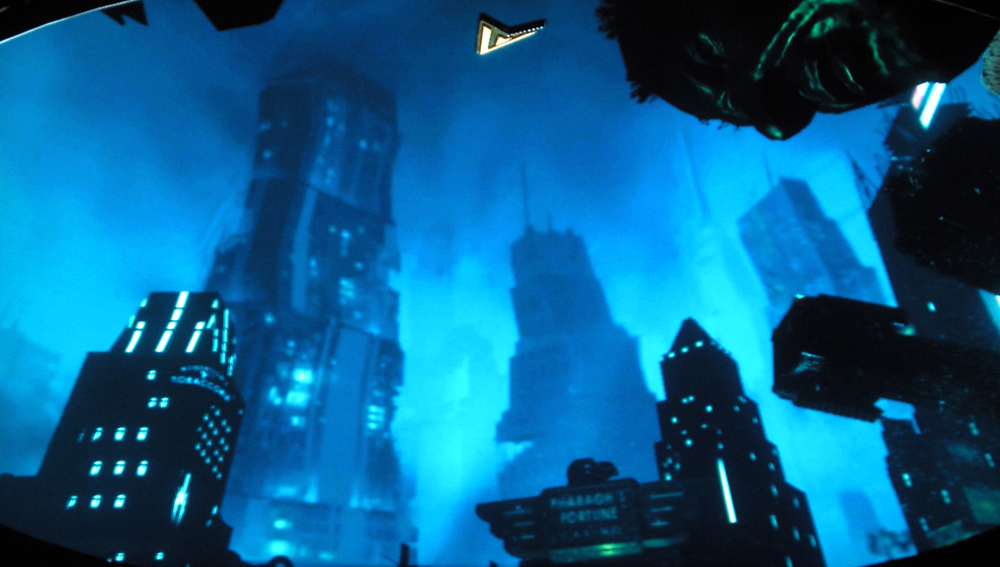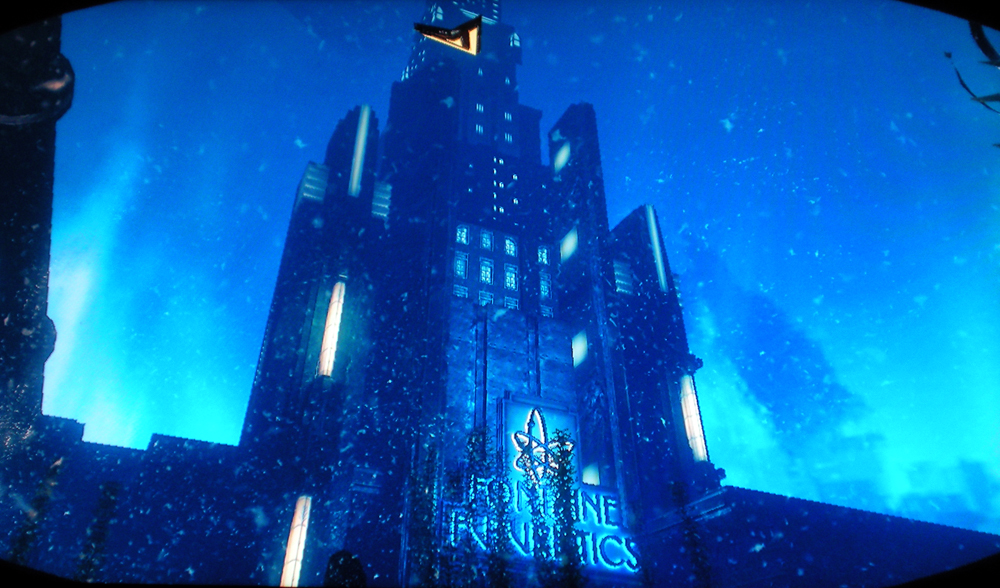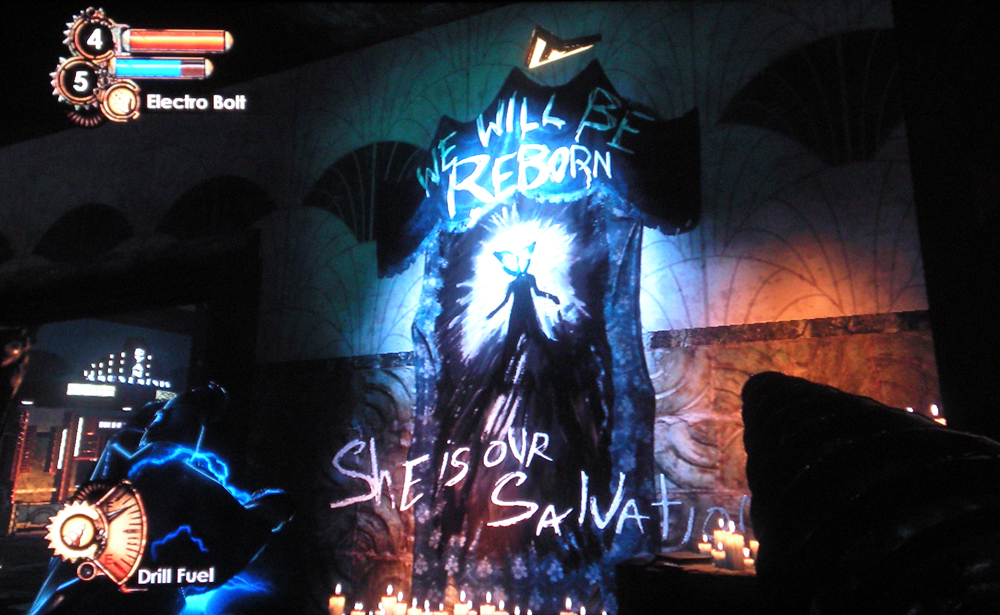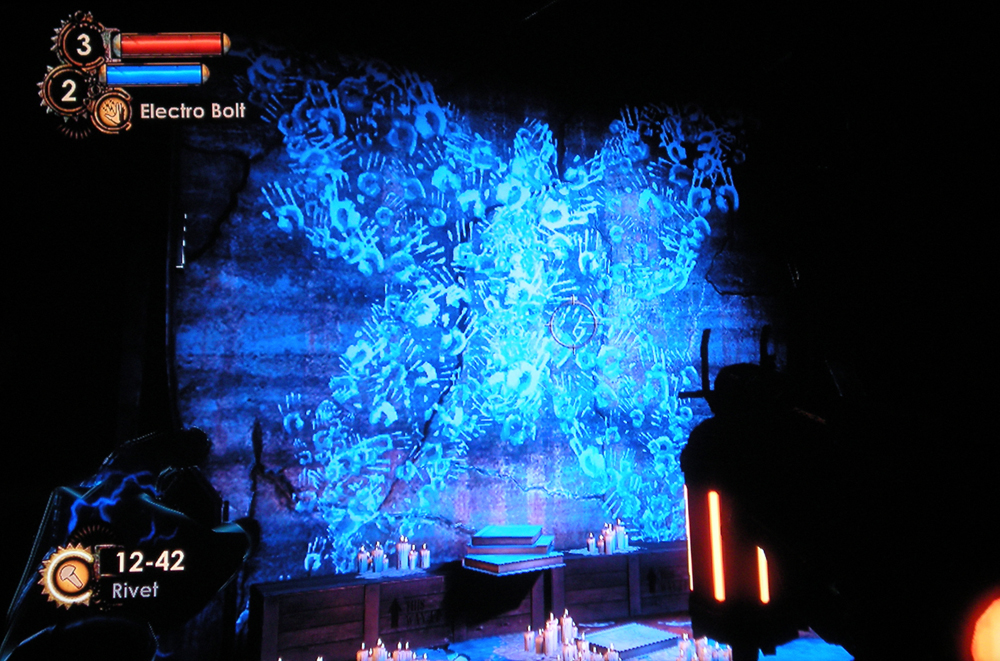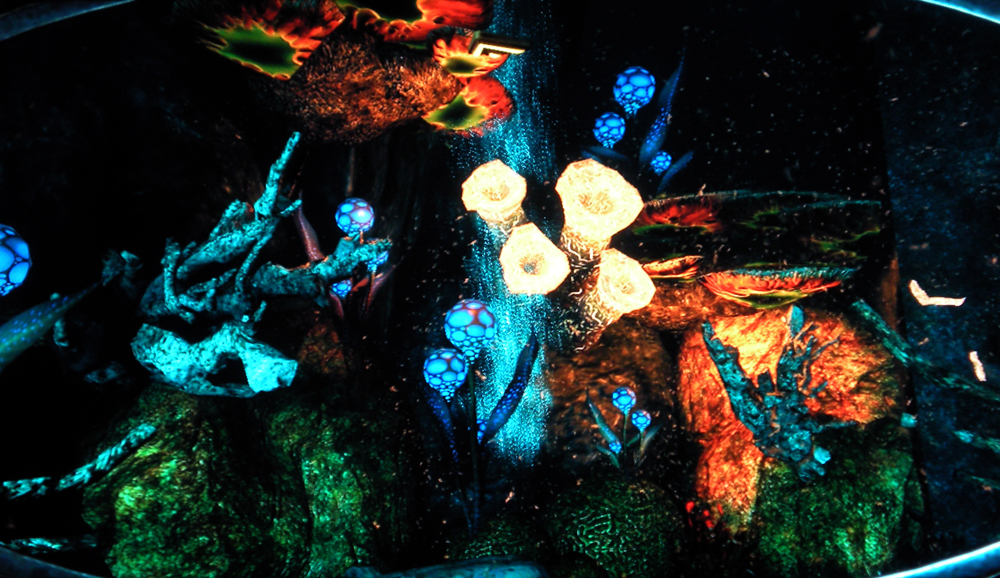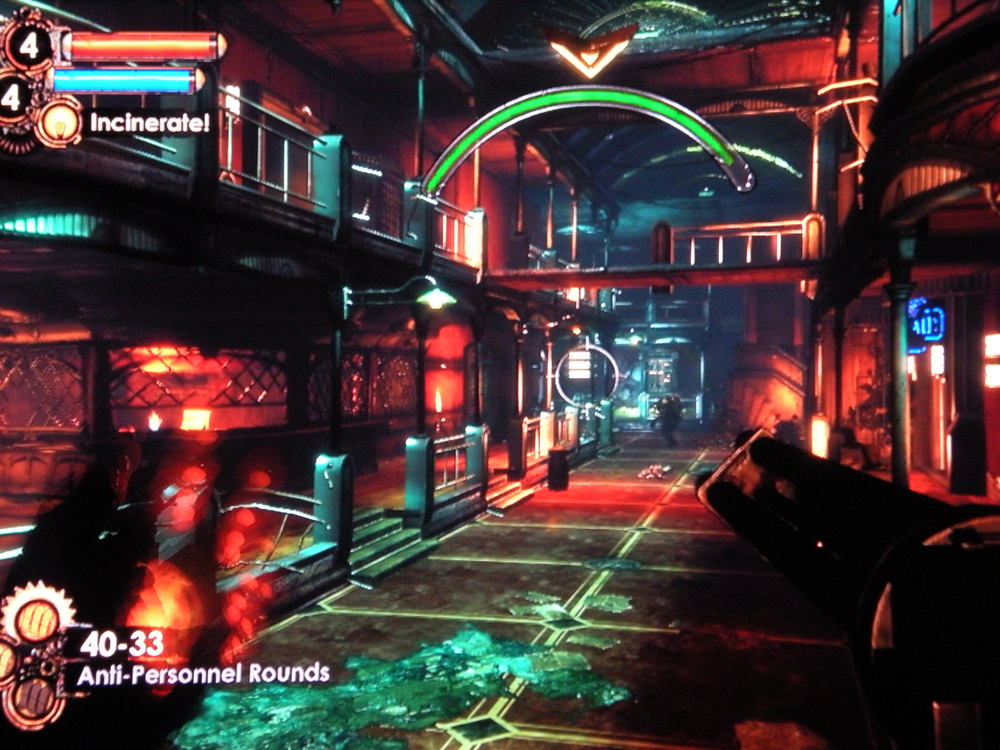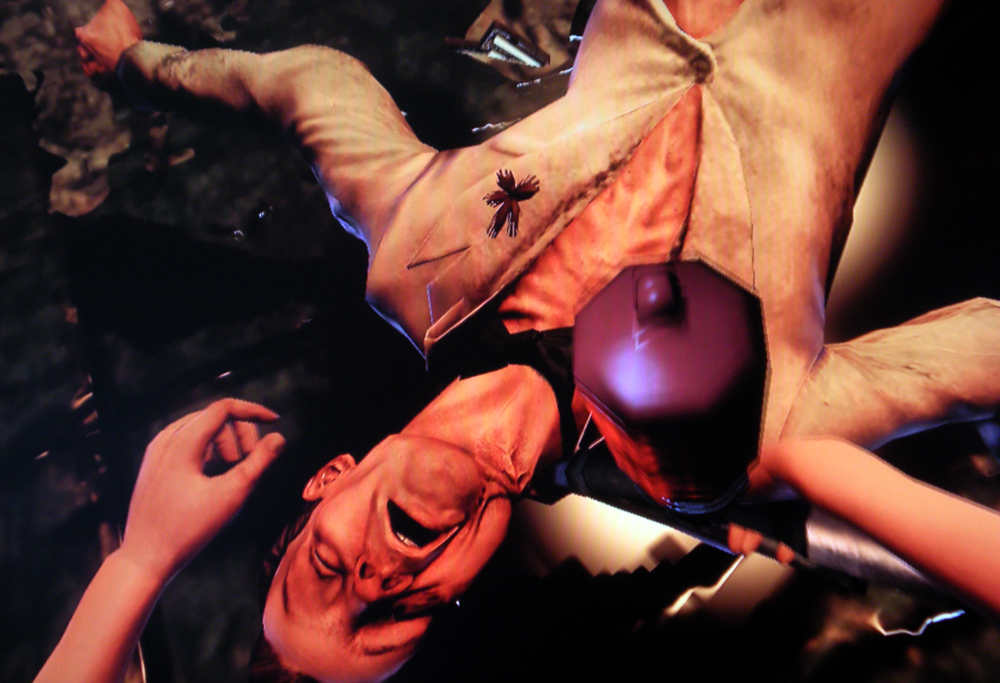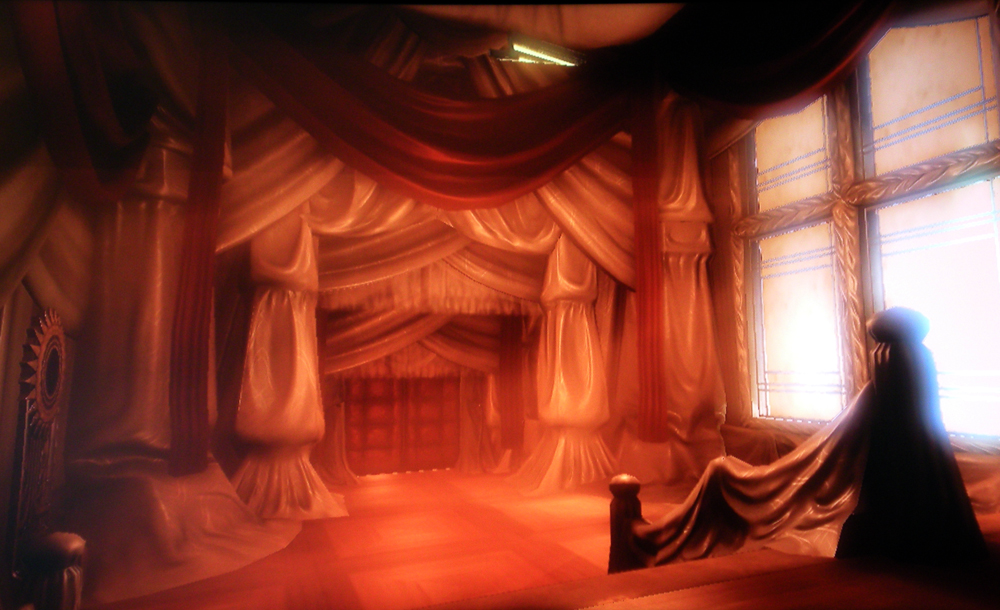If you haven’t heard of the Bioshock franchise then I’m not sure how you found my bog and why you’re still here. That said, for completeness, Bioshock 2 is the sequel to the acclaimed Bioshock game released in 2007. Bioshock 2 is a first-person shooter video game developed by 2K Marin and Irrational Games. Bioshock 2 was released in February 2010.
Now, for those who didn’t play the first Bioshock, stop reading right now and head over to Amazon or your local retailer and buy it immediately. I assume most people interested in the sequel however, have played the original, so we’ll proceed from that perspective. For me, great video games aren’t about killing and destroying, leveling up or accumulating accolades, they are about storytelling. The original Bioshock was a brilliant stroke on this point, developed as a sort of Ayn Rand utopian vision turned decopunk dystopian nightmare wherein the player follows a storyline that plunges you deeper and deeper into the sordid lives of the residents and the tragedy that lead to their downfall into madness.
All of that is again here in Bioshock 2, although it doesn’t feel as natural. The first one was a beautiful narrative of discovery, the plane crash, finding the access tower, walking through rooms that had all been decorated for a New Year’s Eve revelry, it was constantly eye opening and all tragically beautiful and digitally stunning. If you weren’t aware, the sequel preempted its release with a viral website intended to get fans excited about the game entitled Something in the Sea in which clues about the mysterious disappearances of girls were laid out in an office by some sort of investigator, possibly the father of one of the victims. It established a pattern of abductions all along the Atlantic coastal areas in the US and Europe. I had explored this site some 6 months before the release of the game, and had probably formed certain opinions about the game prior to ever playing it. That said, the whole mystique of the game was that is was occurring in 1968, eight years after the events of the first title when Rapture had been plunged into their dystopian nightmare.
*** SPOILER ALERT ***
After this point my review is more intended for those who’ve already played the game.
I suppose my expectations had been something on the order of the main character being related to this research from the viral website and in that, there would be a portion of the game devoted to getting to Rapture, with a subsequent experience of Rapture that was somehow different from the first. I don’t know what exactly this modified viewpoint would be, but it wasn’t to find the city almost exactly as it had been 8 years previous. I’d have thought that there would be one of two directions the civilizations could take from that point, either A) The splicers digress further, becoming even more bestial and mutated without the regular supply of Adam that the Little Sisters provided and where the original Bioshock Rapture was in a state of ill repair, thus Rapture would be positively decrepit; or B) Someone one or some group from the remaining non-splicer affected people would rise to retake some or all of Rapture and rebuild it, either in the mold of what Ryan had envisioned, or something drastically different. What 2K had developed is something in between.
The emergence of Sophia Lamb was a wonderful plot element, and the myriad shrines erected to here were a brilliant experience. The idea that in a dystopian nightmare a demagogue may rise to elevate the people from the muck is very believable, and the cult-like following a lovely touch. The element of the butterfly as her symbol, evoking the notion of transformation of metamorphosis, was perfect. Something greater rising from the insulated cocoon that she perceived that Ryan had placed them within, only to achieve a communal greatness. Andrew Ryan, champion of the individual, thwarted in memory by the socialist dogma of a perverted psychologist, an elegant twist. However, I was frustrated with the logic of the situation (a perpetual flaw in my character I suppose). I just don’t see anyone successfully building any functioning society on a population of drug dependent psychotic murderers. I had some issues believing that the maniacal splicers were a viable community living in the patchwork ruins of Rapture, worshiping Lamb and doing her bidding whilst the Little Sisters carried on as usual.
This brings me to another minor issue I have with the plot. The brief cameo of Dr. Brigid Tenenbaum in the beginning seemed oddly disjointed because she never appears again. She was such a pivotal character in the first title, and her return to Rapture suggests a greater agenda, instead she is simply a vehicle to introduce you to Augustus Sinclair. Sinclair acts as your guide through the storyline, although one is immediately suspicious of his motives after the experience with Atlas/Fontaine in the original Bioshock. The whole of the story line fell apart here for me a little. In the first game, when Fontaine exposed himself for flasehood that was Atlas, I felt completely betrayed. The second game had the perfect opportunity to capitalize on the player’s paranoia, but doesn’t really. Sinclair isn’t good, certainly, but he isn’t bad either, just an opportunist trying to take advantage of the situation. I did love his southern accent though, it was a well played character.
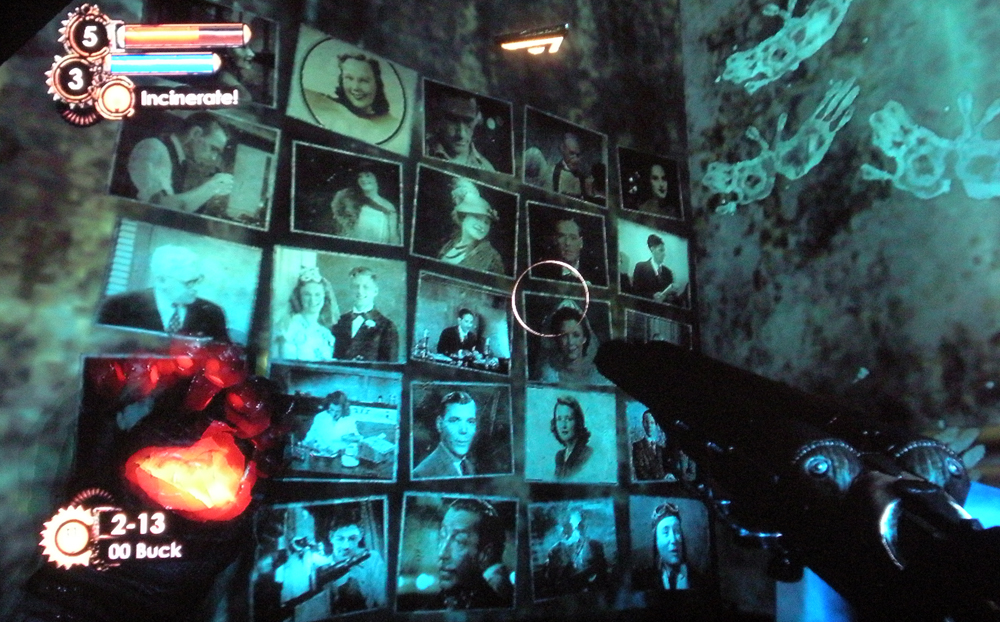 Later, after I finished the game, I learned that Mark Meltzer’s role, as the man searching for his daughter, had not originally been part of the plot, but the success of the viral website had prompted the creators to included him. How he was not an essential part of the plot from the beginning I’ve no idea. I very much loved how all of his audio recordings were accompanied by a color photograph in swank 60’s attire. For much of the game I fervently believed that I, subject Delta, was in fact Meltzer, but unfortunately that was not their intention.
Later, after I finished the game, I learned that Mark Meltzer’s role, as the man searching for his daughter, had not originally been part of the plot, but the success of the viral website had prompted the creators to included him. How he was not an essential part of the plot from the beginning I’ve no idea. I very much loved how all of his audio recordings were accompanied by a color photograph in swank 60’s attire. For much of the game I fervently believed that I, subject Delta, was in fact Meltzer, but unfortunately that was not their intention.
The role of Eleanor was interesting, and the ending was appropriate, although not particularly stimulating. I saved all the Little Sisters and achieved the “good” ending.
Now, as for the gameplay, I must first note that the majority of the game is visually stunning. The underwater scenes, where Delta walks between buildings, is particularly so. Each of the levels are gorgeous and hold up well to the narrative. The weapons were a well thought out evolutions from the first game, adapted for the player’s new role at a Big Daddy. Of course from the moment we heard rumors that the player would actually be one of the Big Daddies, we were all keen to get a run as using the drill tool to carve up enemies. This did not disappoint, and even when other, greater weapons were acquired, made for a much more engaging weapon of last resort when one was out of ammo, or thrust into melee. I would rank the weapons as follows:
Most Used Weapon – The Gatling-style machine gun. With standard, anti-personnel and armor piercing rounds, it was by far the most versatile.
Least Used Weapon – Launcher. Even with proximity mines and heat seeking missiles, the launcher is just such a clumsy weapon that really does very little damage compared to what it should do, and until you get the gene tonic that makes you immune to the explosion, it is a very dangerous option with enemies that close fast.
Messiest Weapon – The shotgun. I really had a lot of fun when attacked my a multitude of splicers, hitting them with my freeze plasmid and then blowing them to shards with the shotgun. Oh what fun.
Coolest yet Least Useful Weapon – The speargun. While the rocket spears proved very useful against large targets, it generally didn’t fire fast enough or do enough damage for me to go to it very often. That said, when I saw a splicer up on a catwalk, all alone, it was a lot of fun trying to hit them in he head an pin them against the wall…muhuhuhuhahaha…
While the storyline, much like the first Bioshock, is very linear, I they did two things I liked very much:
1) The use of a large level design that had to be traversed multiple times in order to fulfill different missions. The levels were exceedingly detailed, and even after I’d wandered through one in a couple of times to complete specific goals, I would still find hidden doors or rooms that lead down completely different paths. I felt this helped keep the storyline from feeling too linear, because one had the option to roam about (to a certain extent) purely on a mission of discovery instead of specifically following the storyline at all times. The reality of this is nice because rarely should a game feel like a straight shot down a corridor. The more expansive the movement options the player has at his/her fingertips as a great deal to the richness of the level design.
2) The incorporation of acquiring little sisters and helping them collect Adam was a significant tactical innovation. Once one realizes that as the Adam is collected splicers will converge on the scene and attack, and further, upon completion of the Adam collection, when the Little Sister is returned to their circulation tubes, a Big Sister may come, strategy completely changes. I very much enjoyed laying traps for the scene, whether they be plasmid, or weapon based, positioning one’s self by a hacked security camera or machine gun, or arming a perimeter with mini-turrets. It also made it intriguing that there were multiple bodies the Little Sisters could extract Adam from, so choosing those in locations that were strategically defensible became essential. If I knew it were just splicers coming, I could select a more exposed location, but if it were time for a Big Sister to come along, I could save the one located behind a turret or security camera for additional allies.
For me, the best part of the narrative was when Eleanor transferred Delta’s consciousness into a Little Sister and one then plays the game from her point of view. The transformation of the levels, from bleak, dark, ill-lit mazes of leaking walls and ruined clutter, to a warmly lit, tapestry draped world of toys, pillows and elegant people dressed in masks and finery. The contrast was start, and the superimposition of the faux Disney-esque scene upon the visage of the Little Sisters was an excellent experience. I loved how pools of blood appeared as trails of rose petals, or dead bodies containing Adam became peacefully resting angels. The walls are decorated with propaganda posters and the rooms adorned with might statues, all extolling the virtuous role of the Big Daddy in the lives of the little sisters. I will say that the one disappointment I had in the level was that there was no interaction in the ventilation tubes they traverse, I was rather hoping that might have been a more involved piece.
